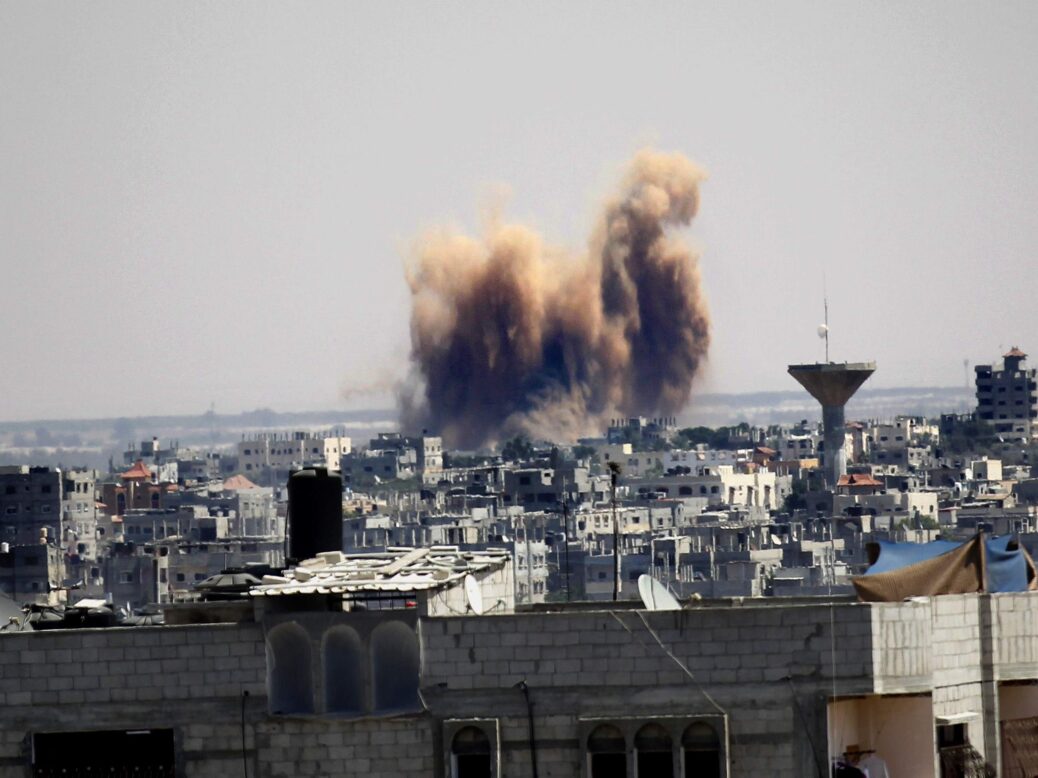
Five weeks into the fighting in Gaza, there has been widespread condemnation over the high number of civilian casualties, especially given Israel’s claim that it uses “the most sophisticated weapons available today in order to pinpoint and target only legitimate military objectives and minimize collateral damage to civilians.”
Israel is a world leader in unmanned technologies, which make up the backbone of its high-tech arsenal. In Gaza we see a maturing of the art of drone warfare: ground robots probe Hamas tunnels, artillery units use mini-drones to look over the battlefield, and in the sky, long endurance unmanned aircraft provide intelligence, paint targets and drop bombs.
Drone warfare extends through time as well as space. Over the years Gazans have become familiar with the distinctive buzzing that means drones are loitering overhead performing “istar” – intelligence, surveillance, target acquisition and reconnaissance. In less poetic language, they capture information that will be used to compile a list of people and things to destroy at a later date.
Making a list, checking it twice
After the previous major Gaza action, 2008’s Operation Cast Lead, national security analyst Anthony Cordesman studied what went into the making of an Israeli target list. Imagery, communications and human intelligence were used to develop what he described as a “remarkably accurate picture of Hamas targets” that “treated virtually every known Hamas location or residence as a potential area of operations.”
Gaza is a densely populated, highly urbanized environment, and the problem is that Hamas, like guerrillas everywhere, likes to operate in civilian areas. Israel knows this tactic well, and is also cognizant of war laws that frown on states who kill civilians on their way to the bad guys. But there is a loophole – if the military advantage gained is significant, then the action can be defended as a “military necessity.” Cordesman found that for Cast Lead, Israel “explicitly evaluated the risk to civilians and the location of sensitive sites like schools, hospitals, mosques, churches, and other holy sites,” against the military advantage to be gained by hitting these targets regardless.
Target more, kill more
Israel has owned up to attacking 4,762 “terror sites”. That’s a lot of targets in tiny Gaza, however accurate the weapons. We can assume that Israel continues to put a lot of thought into choosing targets. We can also assume that, thanks to its drones, it has a pretty good idea of what it hits. In March, an Israeli officer told CBN News, “the most important thing that the [drones] help during combat is to distinguish terrorist from civilians because most of the enemy techniques here in the region is to operate from civilian areas. We really don’t want to hurt civilians during combat.”
And yet, hurt them they do. According to UN estimates, some 72 per cent of the nearly 2000 Gazans killed were not Hamas militants, but civilians – children, old ladies, bank tellers, schoolteachers. Even the young men, say their mothers, were out buying bread, not firing rockets.
One of the brakes on going to war used to be the risk to soldiers’ lives, but thanks to drones, armies don’t even have to put boots on the ground or pilots in the air, and with all this hi-tech weaponry, all that high-grade intelligence, all those lawyers advising them, modern militaries think they can dispel the fog of war and take the shot.
The problem is, the more that they think they know what they’re doing, the more inclined they are to do it. The biggest lesson of drone warfare is that it lowers the threshold for military action. As Gaza shows, drones makes militaries feel confident about rushing their bombs into areas where angels may fear to tread but where civilians have little choice.
Ann Rogers is co-author, with John Hill, of Unmanned: drone warfare and global security, published by Pluto Press, 2014. She tweets @unmannedfuture






